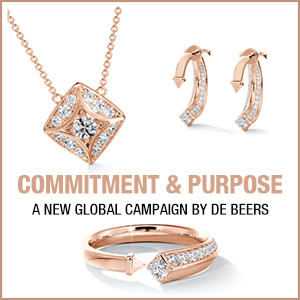
Increasing acceptance of lab-created diamonds in both the broader jewellery industry and among consumers will boost the importance of this new product
Members of India’s Bharat Diamond Bourse recently voted to reverse a long-term ban on trading the stones within its premises, while a report conducted by research firm The MVEye found approximately 38 per cent of US independent jewellery retailers now stock lab-created diamonds, with 80 per cent of consumers aware of the stones – compared with less than 10 per cent in 2012.
Yehuda Diamond Company has launched the latest model of its Sherlock Holmes device, which can detect both chemical vapour deposition (CVD) and high-pressure high-temperature (HPHT) lab-created diamonds.
“The new Sherlock Holmes is user friendly with a laptop-style screen lift up, and we have fine-tuned the accuracy and added an array of tests, multiple sensitivities and views,” Yehuda said.
The 3.0 model also boasts a more accessible design and easier detection of diamond simulants, such as cubic zirconia.
At the same time, several improvements have been made. The new model has a significantly lower false-positive rate than the previous model’s rate of 2.2–2.5 per cent.
“Using the new eight-times magnification view, a 0.005-carat diamond looks like a 2-carat diamond on the screen, making detection of the smallest diamonds and simulants very easy. Plus, the internal long-wave UV [ultraviolet light] test dramatically reduces the small amount of false positive results.”
Designed by Yehuda Diamond Company founder Zvi Yehuda, the Sherlock Holmes 3.0 retains the previous model’s 100 per cent detection rate of CVD and HPHT stones, as assessed by the Natural Diamond Council’s Project ASSURE testing process.
Yehuda added, “We are confident that our newest lab-grown diamond detector will outperform every other detector that is currently scheduled to be released, even the ones that are priced significantly higher.”
Yehuda’s first detector, the Sherlock Holmes 1.0, debuted in 2017; the 2.0 model was released in March 2019 and was widely adopted across the industry, being used by a number of international grading laboratories as well as jewellery companies Tiffany & Co. and Graff.

